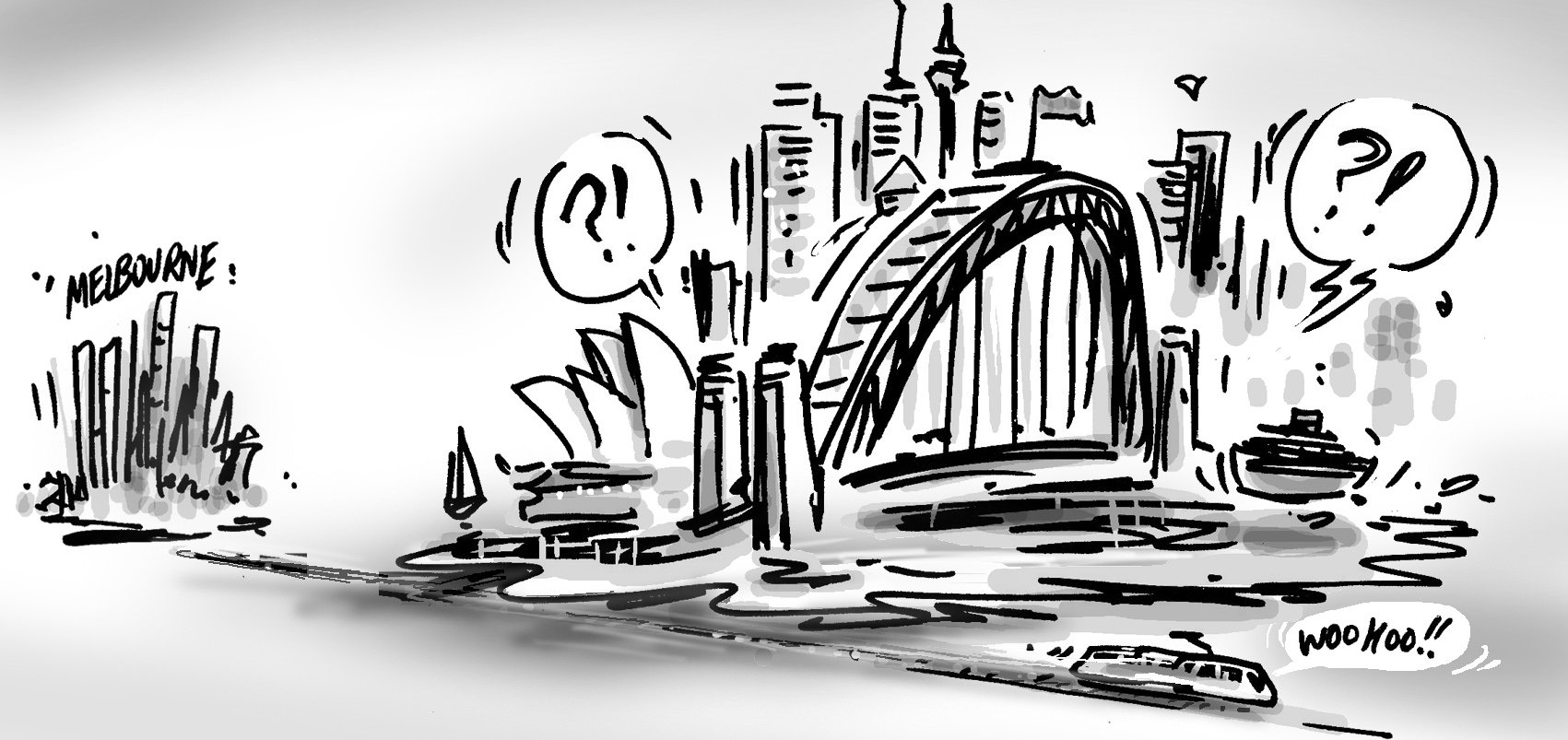BLOG
The Christchurch earthquake – from a Census perspective…
The Christchurch earthquake – from a Census perspective…
Just over three weeks ago, on Tuesday the 22nd of February 2011, Christchurch, the largest city on New Zealand’s South Island was hit by a devastating 6.3 magnitude earthquake killing over 160 people, injuring hundreds more and displacing thousands of Christchurch residents to other parts of the Canterbury region, the rest of New Zealand and as far away as Australia. Three days after the disaster, New Zealand’s Government Statistician, Geoff Bascand and Statistics Minister Maurice Williamson announced that New Zealand’s 2011 census (scheduled for 8th March) would be cancelled. What are the implications?
Cover photo credit - Nareeta Martin, Unsplash.
Why was the NZ 2011 Census cancelled?
The New Zealand census has been cancelled only twice in the past. The first was in 1931 because of The Depression (not because of the Napier earthquake) and again in 1941 during World War II. Both cancellations happened before the New Zealand government had a legal obligation to hold a census every five years (explained in detail later).
The decision to cancel the census was made after consideration of many influencing factors including the ethical elements – it would be insensitive to go door knocking around Christchurch and asking people for census forms when so many have lost lives, lost friends and family and too commonly – lost homes and all possessions.
The situation was further complicated by the fact that so many homes were condemned by city engineers and building inspectors so a large number of dwellings, even outside the CBD were unsafe for census collectors to visit.
Add to this a population hit taken by Christchurch in the days immediately following the earthquake where an estimated 65,000 people (17% of the city’s population) left the city. The displacement of all these people from Christchurch would create a distortion of collected data not only for Christchurch but also for other towns and cities around New Zealand which will house these people indefinitely.
ANZ’s economics and market research newsletter “Market Focus” compares Christchurch’s population exodus to other parts of the world which experienced similar disasters such as Kobe, Japan and anticipates that of the estimated 65,000 people who have fled the city immediately after the quake, over 15,000 may leave for good, decreasing Christchurch’s population by 4%.
Statistics New Zealand (New Zealand’s national statistical office) also faced a serious problem with being able to successfully conduct a census from a technical/operations point of view. Their Christchurch offices (where the bulk of census operations are led and conducted from) and computer systems were damaged by the earthquake with one of the two offices in Christchurch being cordoned off and severely damaged.
With damage to Statistics New Zealand’s infrastructure and inability to guarantee successful processing of census information, New Zealanders were being advised to dispose of blank census forms and destroy completed ones. At the time of the cancellation about 70,000 electronically completed forms were received along with a number of paper forms. The 2011 Census costs NZ$90 million (AUS$65 million) with NZ$42 million (AUS$30 million) already spent on the current cancelled census. Around 7,000 census collectors will be paid for work despite the cancellation.
The decision to cancel the 2011 census of population and dwellings was supported by the opposition (Labour Party) though where the Statistics Minister announced “…it was not clear when it (the census) will be held again, but it would not be in 2011.” The Labour Statistics spokesperson Raymond Huo said that the feasibility of other options for the census are being investigated.
Why have a Census?
Information from a census assists informed decision making and basically helps to run a country effectively and efficiently with resources being strategically directed to the right people in the right places at the right time.
This official count of a population and dwellings in a country (at a particular point in time) also helps benchmark one area of a country against another because all questions are the same and allow for direct comparison in order to gain an idea of a region’s strong/weak points, potential needs and the benefits or opportunities it can offer to the wider community.
By law, Statistics New Zealand must hold a census once every five years. Everyone in New Zealand also has a legal obligation to complete a census form. This information is outlined in the Statistics Act 1975.
Population and household information from a census helps determine how billions of dollars of government funding is spent in the community and to ensure that services at a local level are relevant to people who live there. The census is used to make decisions about:
- Services (public healthcare, education, transport and infrastructure, community facilities or social services provision).
- Planning and strategy – encouraging development in certain areas of a country or region. Emergency services use census information in planning and identifying vulnerable populations such as locations of elderly people. Means of travel to work are recorded in the census to help identify public transport and transport infrastructure trends/needs.
- Employment information from the census provides a breakdown of numbers of employed/unemployed people and the industries they work in. This information can identify skill shortages and needs for training.
- From a political perspective, census information is used to decide electoral boundaries. It is also used by councils, community groups and businesses for effective policy planning and decision making purposes such as providing information on elderly populations for more suitable construction of aged care facilities. The same type of information can help plan for a location of a new community centre, library or skate park.
Why is the 2011 Census important?
The 8th March 2011 census would have been the 34th time New Zealand has conducted the exercise since 1851.
At time of writing, the New Zealand population is estimated to be 4,403,000 (based on Statistics New Zealand’s estimated resident population figures). One of the purposes of a census is to calibrate the estimated figures (which use births/deaths and migration pattern numbers) so the figure provided above would have been adjusted up/down based on final census results.
Apart from that and other core aims and target outcomes from a census there were some specific figures that the New Zealand government was particularly interested in obtaining from the 2011 census. For example, Statistics New Zealand was planning on getting a clearer picture of the number and distribution of Maori on census night. Over 500,000 people identified as having Maori ethnicity at the 2006 census, 30% up on 2001 with the trend expected to increase.
Another important group of people who are recorded by the census are people with disabilities. They rely on services provided by the government such as healthcare and accessibility provision – and the government relies on the Census numbers in order to provide well for disabled people.
What are the implications of cancelling the Census?
Cancelling the census will have many implications for New Zealand’s official information holdings as well as some missed opportunities.
Of course, I do not disagree with the decision to postpone the census during such a trying time in Christchurch’s or New Zealand’s history but I do think that it should be held in the next 12 months, maybe even in early March 2012 so that New Zealand can utilise the information from the census to help rebuild Christchurch and correctly decide on resource allocation around the rest of New Zealand where some strategic savings and budget cuts are likely to be required.
The currency of official populations and dwellings data between censuses decreases as time passes. While information from 2006 is still relevant and valuable, particularly for time series and trend analysis, it becomes less reliable for presenting a current view of the nation as many things will have changed. Any large residential developments which have been built around cities like Wellington, Auckland or even Christchurch since 2006 are not represented in mesh block datasets. A good example of such a large development which has come to life since the 2006 census is Pegasus Town, north of Christchurch, which commenced construction in 2008 and will have a capacity of around 800 new dwellings. In 2006, it was rural land.
The “Maori Social Survey”, “Disability Survey” and the “Census Post-enumeration Survey” were all due to be carried out soon after the 2011 census. The “Maori Social Survey” and the “Disability Survey” are closely connected to the census as it is the census that provides most effective ways of being able to reach Maori and people with disabilities. If the Maori population (as with other ethnic minorities) is not counted correctly, Maori communities could miss out on some services such as children’s healthcare, education or Maori culture and arts centres. Iwi have also been known to actively use the census for providing assistance to their people and make informed decisions about their communities.
From a legal perspective, The Statistics Act 1975 (Section 23) requires a census to be carried out every five years from 1976. Under this Act, New Zealand must hold a census sometime in 2011. Because the census is unlikely to be held this year and with a decision on the next census yet to be made, the Act needs to be amended before the end of 2011 to ensure Statistics New Zealand is not breaking the law.
Finally, The Statistics Minister argues that holding a census now would produce distorted data and not a picture of “normality”. We would counter that a census held soon after a disaster such as this one could act as a benchmark – capturing the immediate population effects of the disaster, and acting as a baseline from which the recovery could be measured.
The census in March 2011 had an opportunity to capture the population effects of the double-dip recession that New Zealand is very close to experiencing. One more quarter of negative growth would classify as a recession. A recession period census would collect figures that describe employment/unemployment, employment by industry, involvement in unpaid activities, individual/household incomes and so on – all highly valuable in planning a way forward.
What next?
Myself and the rest of the team at .id will keep an eye on the census developments in New Zealand and see if any announcements are made over the next few months regarding when another census is likely to be held. Follow us on twitter @dotid for updates.
Statistics New Zealand updates the public and their employees with news regarding the census and recovery efforts in Christchurch.
This is definitely a time when efforts should be put into recovering the most basic of life’s needs to the many Christchurch residents who are still in need of them and though statistics, demographics and the census are secondary to that – the 2011 cancellation just goes to show the extent and range of New Zealand’s core services that have been affected by the earthquake.
.id is a team of demographers, population forecasters, spatial planners, urban economists, IT and data experts who use a unique combination of information, applications and consulting to help governments and organisations understand people and places for evidence-based planning.
Access our population forecasts for Local Government Areas here.
Nenad Petrović
Nenad’s background is in geosciences and geographic information systems. At .id, Nenad has experience as both as a demographer and population forecaster. His areas of expertise are place-based analysis, identifying spatial patterns in demographic trends, community profiling, catchment analysis and an understanding of role and function of different communities.









